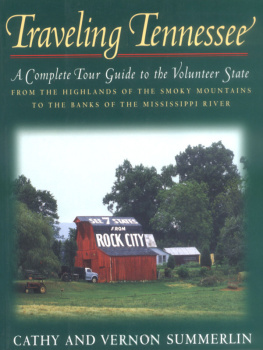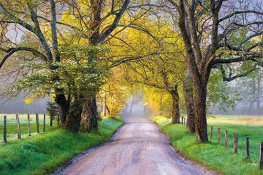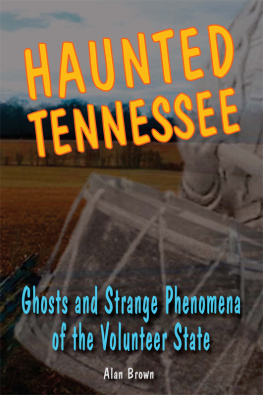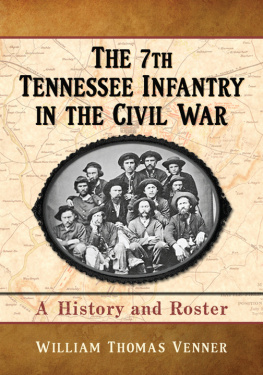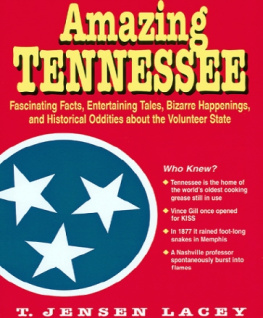V is for Volunteer
A Tennessee Alphabet
Discover Tennessees natural wonders and fascinating history. V is for Volunteer stimulates children to learn about their state through familiar Tennessee icons like the Grand Ole Opry and Graceland. And even lifelong Tennesseans will enjoy reading about the Jubilee Singers and W.C. Handy.
Intriguing text by Tennessean Michael Shoulders and wonderful illustrations by award-winning wildlife artist Bruce Langton bring Tennessees mountains and music to life in this book, created for your favorite little Volunteer.
As a Tennessee official, responsible for the State Library and Archives and Regional Library System, I am pleased to have a book that introduces our children to Tennessees exciting history.
V is for Volunteer is a great way to spend time reading about our home state and learning to appreciate the world of books. I thank my friend, Michael Shoulders, for authoring this book for young Tennesseans, and illustrator Bruce Langton for doing such a beautiful job portraying our state.
Riley C. Darnell, Tennessee Secretary of State
V is for Volunteer
A Tennessee Alphabet
Written by Michael Shoulders and Illustrated by Bruce Langton

For my daughter, Meghann, you mean everything to me, from A to Z.
To Pam Munoz Ryan, one of Americas greatest writers of
childrens books, I am blessed to call you friend.
Special thanks to Martha Wiley, Brenda Hensley, and Rachel Shepherd.
Finally, to Heather Hughes and Bruce Langton, your patience is
evidence of the enormity of the human heart!
MICHAEL SHOULDERS
For Rebecca, Brett and Rory...without the three of you, my life
would not be complete. You will be in my heart forever.
My thanks to Sleeping Bear Press and Mike Shoulders for all their
hard work in making this book come to life.
BRUCE LANGTON
A
The Appalachian Mountains extend 1,600 miles from central Alabama to Maine. These mountains form the eastern section of Tennessee. The Appalachians abound with plants, animals, and recreational opportunities.
The tulip poplar was chosen as the state tree because it grows all across Tennessee. The pioneers used the poplar hardwood to construct houses, barns, and other farm buildings.
Tennessees Ocoee River was the site for the 1996 Olympic white water canoe and kayak competition.
A is for Appalachian Mountains rising tall and grand.
Theyre home to bear and eagle and where tulip poplars stand.
Come insideto Tennessee, its people, places and history.
Turn the pagesso much to see. Start with A and end with Z.

B
Beale Street extends east from the Mississippi River and is one of Memphiss most famous streets. William Christopher Handy (W.C.), a son of former slaves, was born in Florence, Alabama. He struggled to earn a living playing the cornet in bands across America. At the age of 32, W.C. Handy came to Beale Street. He composed a mayoral campaign song for E.H. Crump. The song, originally named Mister Crump, was changed to Memphis Blues and became a smash hit in Memphis. Later, his St. Louis Blues received wider popularity, and W.C. Handy became known as Father of the Blues.
Today, blues and jazz can be heard in clubs all along Beale Street. Visitors listen to The Blues and dine on traditional Southern foods such as ribs, cornbread, and bar-b-que.
B can stand for Beale Street, the birthplace of The Blues.
Its where people dance or tap their toes and dine on bar-b-que.

C
Clogging is an authentic American dance form, originating in the southern Appalachian Mountains. It is a blend of the Scottish and Irish clog, Native American traditional dance, and African American buck dance. Clogging differs from buck dance in that cloggers usually dance in synchronized steps. Occasionally, individuals come to the front of the group to do a shine of improvised dance steps. Clogging steps have interesting names like rocking chair, chug, and buck step.
Today, cloggers dance to many types of music, including rap.
C can be for Cloggers dancing to a country beat.
They buck and chug to Rocky Top and quickly move their feet.

D
Each spring daffodils and dogwood trees bloom to signal the beginning of Tennessees spring. Daffodils are considered one of the easiest flowers to grow. Their toxic (poisonous) bulbs keep them safe from rodents and insects. Dogwoods have showy spring flowers, red autumn leaves, and red berries that attract birds in winter.
Daffodils and Dogwood Trees begin with the letter D
Their blooms tell us its time for spring, a onehundred percent guarantee.

E
Elvis Presley helped turn rock-n-roll into a musical phenomenon. Elvis made his first record at Sun Records Company in Memphis in 1954. His hits included Hound Dog, All Shook Up, and Love Me Tender.
Elviss home, Graceland, is located just south of Memphis on Old U.S. Highway 51. Elvis bought Graceland in 1957 at the age of twenty-two. He died there on August 16, 1977. In 1982, Graceland was opened to the public as a house museum with an estimated 650,000 visitors each year. Today, this section of U.S. Highway 51 has been renamed Elvis Presley Boulevard.
Elvis is considered one of the most successful entertainers of the twentieth century.
Elvis Presley begins with E. He really loved to sing.
He sang so well that people started calling him The King!

F
The state flag was designed by LeRoy Reeves. It was approved on April 17, 1905. The three pure white stars represent the three grand divisions of Tennessee: the mountains in the east, the rolling hills of middle Tennessee, and the flat, lush section of the west. The stars are bound together in a circle on a field of blue to show our states unity. A blue bar along one edge keeps the flag from showing too much red when hanging limp.
F is for the Flag we love flying proud and straight.
The three stars represent the grand divisions of our state.

G
G is also for Goo Goo Candy Bars. They have sponsored the Grand Ole Opry for years. The Grand Ole Opry announcer says, Go get a Goo Goo theyre Gooooood! The Goo Goo Cluster is made of caramel, chocolate, marshmallow, and peanuts. Production of the Goo Goo began in 1912, and it is considered to be the first combination candy bar.
The Grand Ole Opry is the longest continuous running radio show in U.S. history. The first radio broadcast of what would become the Grand Ole Opry took place in October 1925. On November 28 of that same year, the Grand Ole Opry was officially born.



